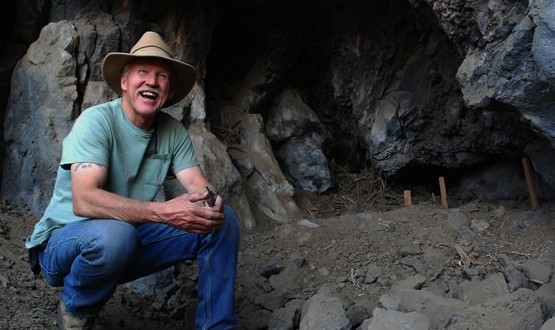DNA from dried human excrement recovered from Oregon’s Paisley Caves is the oldest found in the New World, dating to 14,300 years ago.
University of Oregon archaeologist Dennis Jenkins led excavations that turned up the fossilised human faeces – known as coprolites – that were radiocarbon dated, proving their age.
“Archaeologists have worked at the site since 1938,” said University of Oregon archaeologist Dennis Jenkins of the Museum of Natural and Cultural History. “As we have used increasingly sophisticated scientific techniques in recent years, our understanding of the cultural and megafaunal remains at the site has grown dramatically.”
In 2008, Jenkins’ team documented the discovery of coprolites, or dried human feces, that contained DNA. More coprolites have since been found and tested at multiple independent laboratories to confirm the presence of human DNA. Also discovered – and detailed in Science in 2012 – was the discovery of Western Stemmed points, suggesting the presence of a human culture other than Clovis had arrived on the continent.
The Paisley Five Mile Point Caves are on land owned by the federal Bureau of Land Management (BLM). The site, now consisting of sagebrush steppe vegetation, once was a region of grassy plains surrounding a lake, marsh and river.
“Our public lands serve many public needs,” said Stan McDonald, BLM’s archaeologist for Oregon, in a news release issued by the Oregon State Historic Preservation Office that announced the designation. “As the steward of these lands, the BLM is proud to be the caretaker of this site that captures more than a dozen millennia of human activity in a single place in Oregon.”
The National Register is maintained by the National Park Service under the authority of the National Historic Preservation Act of 1966.
Agencies/Canadajournal
 Canada Journal – News of the World Articles and videos to bring you the biggest Canadian news stories from across the country every day
Canada Journal – News of the World Articles and videos to bring you the biggest Canadian news stories from across the country every day




If the National Park Service, BLM, and the assorted Oregon state agencies are only now recognizing the National Register eligibility of the Paisley Caves, as the story indicates it is indeed news. The early and unique nature of the sites was readily apparent long before the passage of the National Historic Preservation Act half a century ago. Since any cabin in the woods, or older business in town for that matter, can have eligibility if it’s over 50 years old to have one of the recognized oldest sites in the Americas not listed would be a matter of gross negligence by the preservation agencies. Is this the case…or did the writer just fail to check the facts?